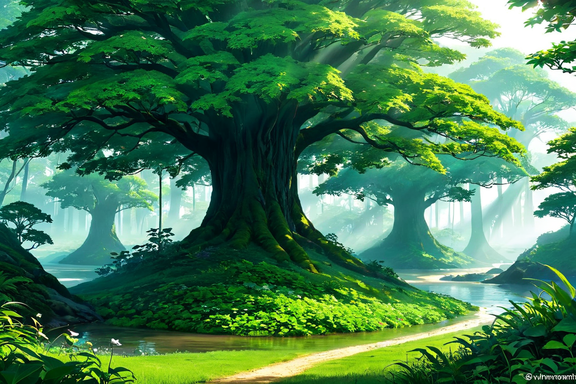It is all interconnected – the air we breathe, the earth beneath our feet, the plants surrounding us – and the environment drives the systems that sustain all lifeforms on Earth. That’s why we’re exploring it in this new in-depth piece, where we ask the age-old question – what is the environment? – and then try to find the answer. In this article, we’ll delve into the complexities that make up our environment, how it works, and why it matters.
Defining the Environment: Beyond Nature's Canvas
The term describes the totality of ‘living and non-living things’ that surround us, including ecosystems, natural resources, climate, diversity of life forms, and the interactions that link them together.
Components of the Environment: A Complex Symphony
Atmosphere: the air envelope of gases containing oxygen, nitrogen and carbon dioxide and other vital ingredients for life, that blankets our world.
Hydrosphere: Oceans, lakes and rivers – all those underground sources that keep aquatic life afloat in water.
Biosphere: the infinite webbed networks of living organisms from microbes on up through the tissues, organs and communities that together form our living world.
Geosphere: This is the Earth’s interior, meaning rocks, minerals — the combined processes acting upon them that cause continents to rise, erode, and fall, all on deep geological time.
Environmental Interactions: A Web of Relationships
Ecosystems: Communities of living organisms and their physical environment, with energy, nutrients and life cycles interacting.
Biodiversity: Biodiversity refers to the variety of life on Earth, including species, genes, and ecosystems. It’s a fundamental component of ecological resilience, which in turn is important for human wellbeing.
Climate: The global climate system regulates weather patterns and conditions over the longer term and profoundly affects ecosystems and societies.
Human Impact on the Environment: Challenges and Responsibility
Pollution: Human activities release chemical, physical and/or biological contaminants into air, water and soil, causing contamination of our surroundings and putting human health at risk.
Deforestation: (1) caused by environmental destruction of forest for agriculture and development of cities (2) results in habitat loss and cause endanger species (3) further impacts ecosystems.
Climate change: Emissions from industrial activity drive up greenhouse gas concentrations, altering the Earth’s climate and leading to higher temperatures, rising sea levels and more erratic weather.
Sustainability and Conservation: Nurturing Our Home
Resource Management: Environmentally friendly practices ensuring responsible use of our rapidly-diminishing resources; avoiding depletion and ensuring that resources are available to our children and to their children.
Conservation efforts: making efforts to protect vulnerable species, restore habitats and embrace renewable energy sources are very important for the preservation of the nature.
Environment as the Blueprint of Life
Finally, the environment is the net that holds our planet together, that makes life so diverse and complex. We are the children of the Earth, and we are deciding now what it will become next. The deep meaning of environment tells us how important it is to save and conserve the environment.
And whether we’re referring to grand, wild landscapes or to the seething microbial ecosphere teeming beneath our feet, from the local soil of a back garden to the rich biotic matrix of the world’s topsoil, we are talking about environment as the creative, evolving canvas of life’s web. If the environment was a painting, the multiplicity of living beings, reaching into an almost infinite number of genetic kinds, are the artwork’s paint.

